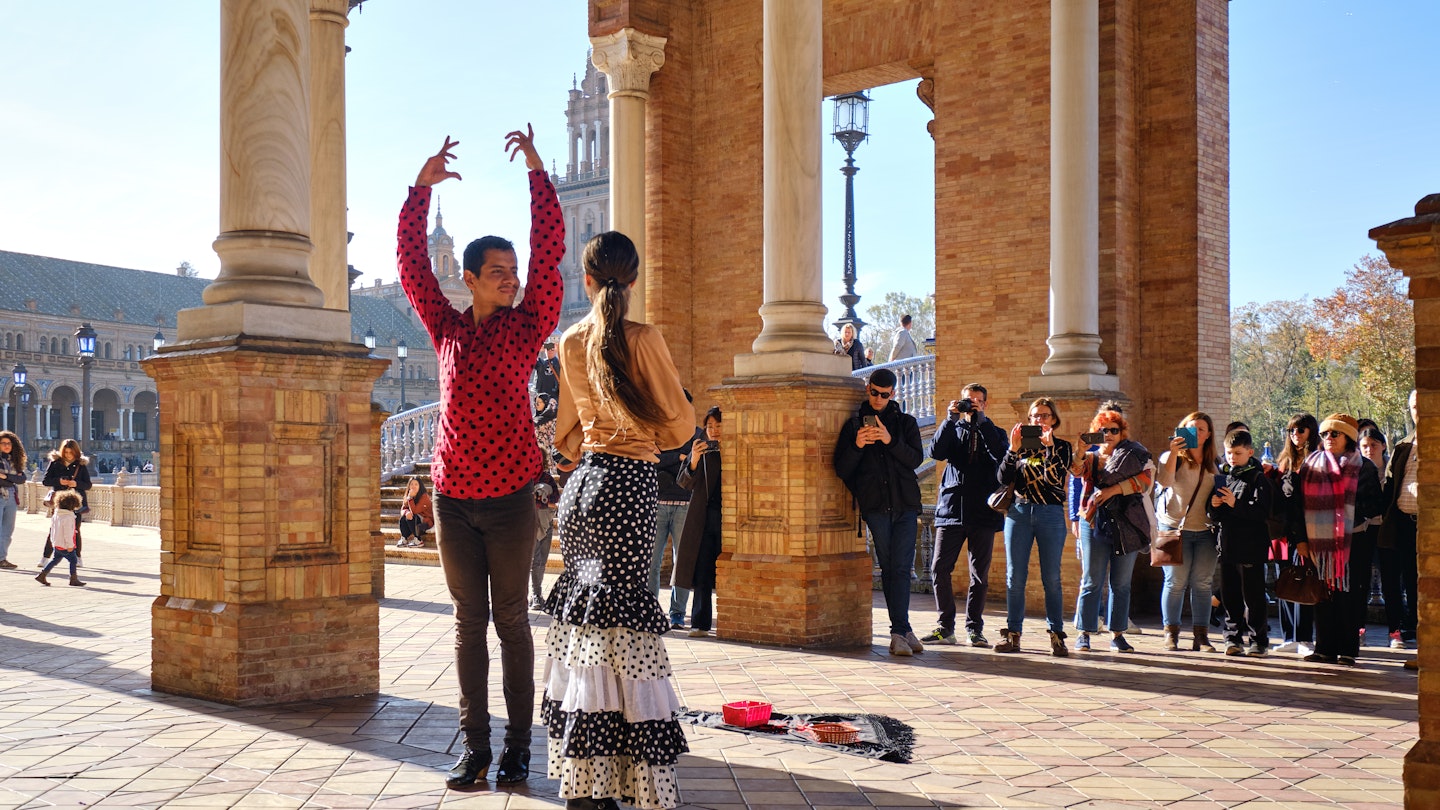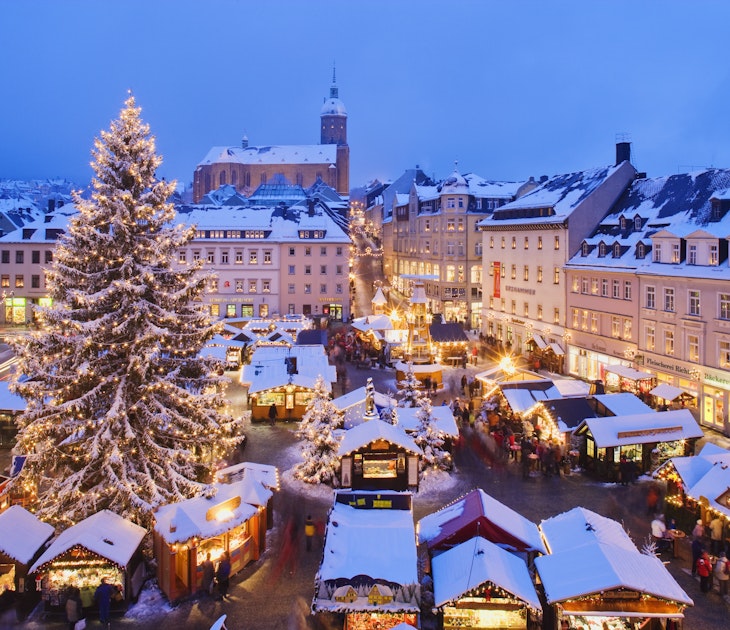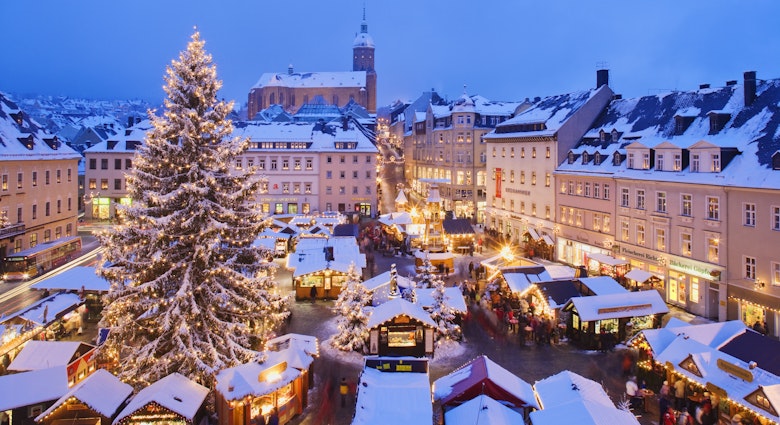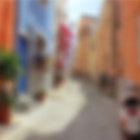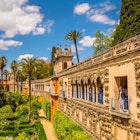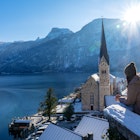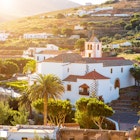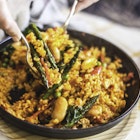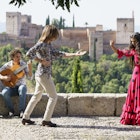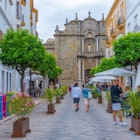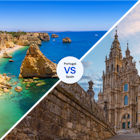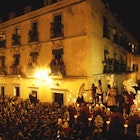Seville is one of the most beautiful and liveliest cities in Spain, with a cerulean blue sky and streets bathed in year-round sunshine.
This manageable metropolis is made for strolling, cycling and scootering and, most importantly, sitting outside a tiled bar or hip restaurant, sipping a caña (small glass of beer) or fino (dry sherry). Spring is the most fragrant and festive time to visit; it can also be extremely pricey.
Peak high season: two weeks in mid-March and late April/early May
Best time to go for festivals
The peak buzz points in Seville are Semana Santa (Holy Week) and the Feria de Abril (Spring Fair), held three weeks apart. Hotels hike up their prices during both festivals. The first sees thousands of hooded penitents walk through the streets followed by religious statues, while in the second, the city’s population spends the entire week being irrepressibly and joyously Andalucian – in other words, dancing, eating, drinking and schmoozing until the wee hours.
The weather is mercurially unpredictable and, while it can be warm and sunny, Holy Week processions are sometimes rained off (the statues are too precious to risk damage). You’ll need a shawl or jacket at night.
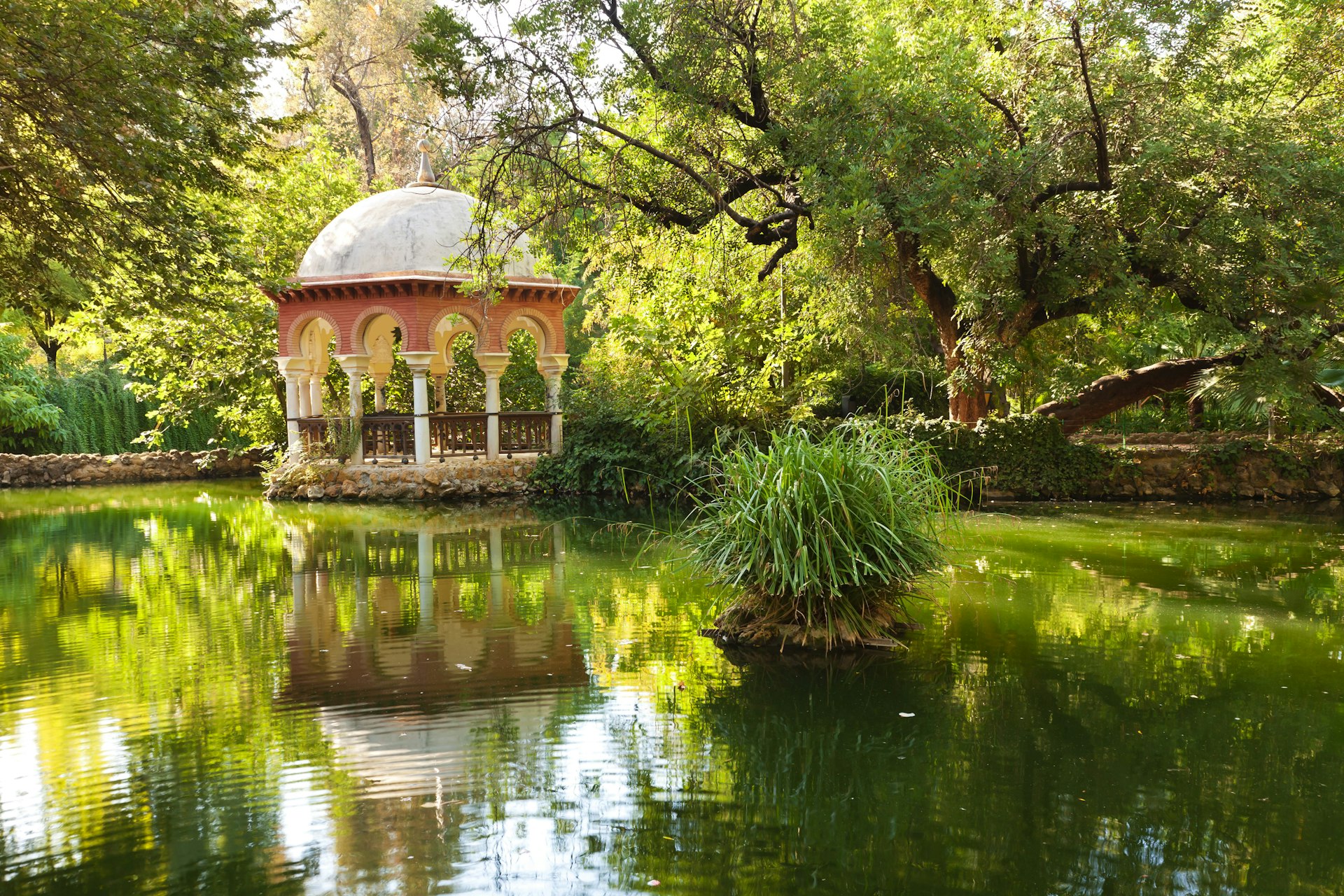
High season: April to June, September to October
Best time to go for outdoor activities
This is the best time for enjoying the city in pleasant temperatures. Days are hot, with plenty of sunshine; nights are warm; and there is little rain, especially in June. Ride bikes along by the river, explore the parks – you’ll appreciate the shade from the trees – and enjoy the nocturnal cultural activities.
Shoulder season: November, February and March
Best time to go for pleasant temperatures
For those keen on milder temperatures, these months are best for you – sunny and warm during the day but chilly at night, it is definitely coat weather. Prices go down and the crowds thin out as the rainy season sets in. If you struggle with humidity and crowds, this is an ideal time to visit.
Low season: July, August, December and January
Best time to go for budget travelers
If you come in peak summer, try to book a hotel or apartment with a swimming pool, even a small plunge pool – consider it a necessity, not a luxury, with temperatures regularly hitting 40C (104F) during these months.
December and January are cool, and these months often see rain showers – it’s the most affordable season, with appealingly low rates. Seville is pretty and atmospheric in winter, with festive lights and seasonal markets.
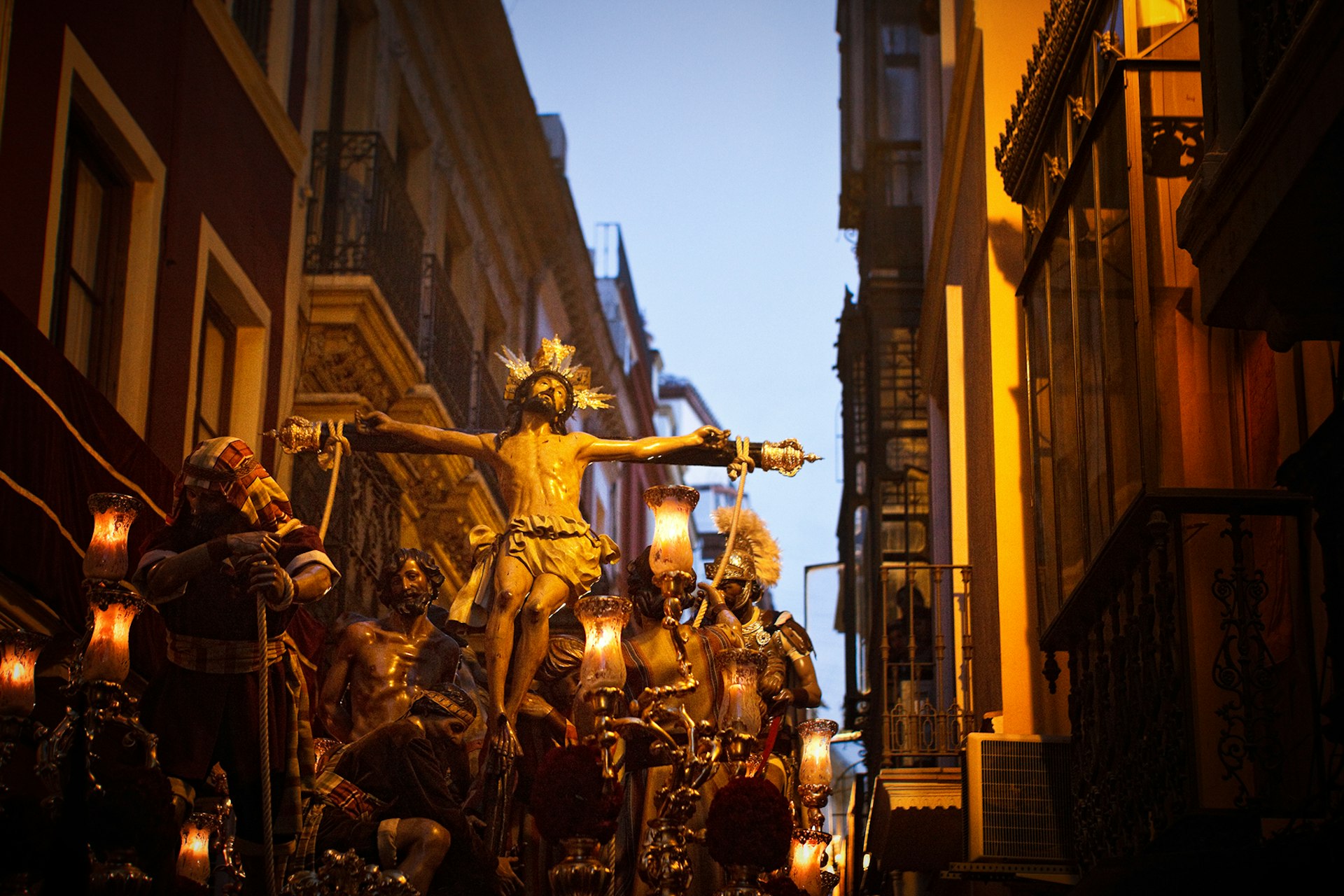
January
The festive season continues from December into early January with Three Kings’ Day (Dia de Los Reyes Magos; 6 Jan). Local dignitaries ride on floats in processions lobbing candies and little gifts to squealing throngs of children. Expect blue skies and crisp air: this is the coldest month with average temperatures of 10C (50F). The oranges are picked from the city’s 40,000 trees.
Key Events: Dia de Los Reyes Magos
February
Days get longer, and often wetter; in mid-February Sevillanos of all ages indulge their love of costume parties at Carnaval. On 28 February, Andalucia’s status as an autonomous community is celebrated in a regional holiday.
Key Events: Carnaval, Dia de Andalucia
March
Catch a sweet waft of orange blossom in the air, as the city’s streets are perfumed by its trees. The other typical aroma from March is incense from Holy Week – processions also mark this month. Hotels hike their rates; if you decide to come now, try and get a room with a window or balcony on the official route.
Key Events: Semana Santa (dates vary)

April
The Spring Fair, or Feria de Abril (April Fair), takes place three weeks after Semana Santa (sometimes partly in May). Take a walk around the fairground to see the outfits: multi-colored trajes de flamenca (flamenco dresses), cropped trousers and side-saddle skirts. Prices shoot skyward for this week too.
Key Events: Feria de Abril (dates vary)
May
In the week before Pentecost (mid-May to early June), you’ll see women in flouncy dresses on horseback, and perched inside Wild West-style caravans, as they set off on the hugely popular pilgrimage to El Rocio.
Key Events: El Rocio pilgrimage (dates vary)
June
Now the days are ramping up temperature-wise, and you’ll be seeking out cool patios and rooftop bars. On the second Thursday after Whitsun (usually June, sometimes May), the Catholic celebration of Corpus Christi is held with street processions and dancing in the Cathedral. Orgullo de Andalucia (LGBTQIA+ Pride) is celebrated with gusto in this exuberant city. The season of open-air summer concerts in the Alcazar gardens kicks off, lasting till early September.
Key Events: Orgullo de Andalucia, Corpus Christi (dates vary)

July
The temperatures are now extremely high (40C/100F and higher). Do like the Sevillanos and take a siesta, then head out at night, to an outdoor bar or restaurant terrace. Triana’s own version of the Feria, La Vela de Santiago y Santa Ana, takes place on Calle Betis, next to the river.
Key Events: Vela de Santiago y Santa Ana
August
As well as the nightly concerts in the Alcazar gardens, look out for outdoor cinema screenings around the city, and jazz and DJ sets at the CAAC in La Cartuja. Many smaller shops and bars close for two weeks in August.
Key Events: Concerts in the Alcázar
September
Seville comes back to life after the long, hot summer. The cultural season kicks off again, with the Bienal de Flamenco, a major biannual celebration of the music and dance form.
Key Events: Bienal de Flamenco (even-numbered years)
October
At Noche en Blanco many museums, galleries and independent shops stay open late and hold special tours and events. Halloween is very popular in Seville, with all ages dressing up; trick or treating is popular in towns and cities too.
Key Events: Noche en Blanco, Halloween
November
November can see rainy days, but downpours are usually short, if intense. On Dia de To’ Santos (1 November, All Saints’ Day), families visit cemeteries to put flowers on their departed loved ones’ graves. Seville Film Festival in early November shows the latest international releases, with local offerings too.
Key Events: Dia de Todos los Santos, Seville Film Festival
December
Navidad (Christmas) is celebrated with its own seasonal pastries and markets; look out for street decorations, and light displays. The main days when Sevillanos celebrate are Christmas Eve (Noche Buena) and New Year’s Eve (Noche Vieja), with the countdown to midnight marked by the traditional eating of 12 grapes.
Key Events: Christmas Eve, Christmas Day, New Year’s Eve
You might also like:
The 9 best day trips from Seville
The spirit of southern Spain: reasons to visit Andalucia
Top 20 free things to do in Seville
